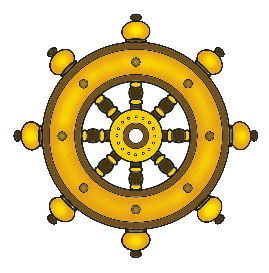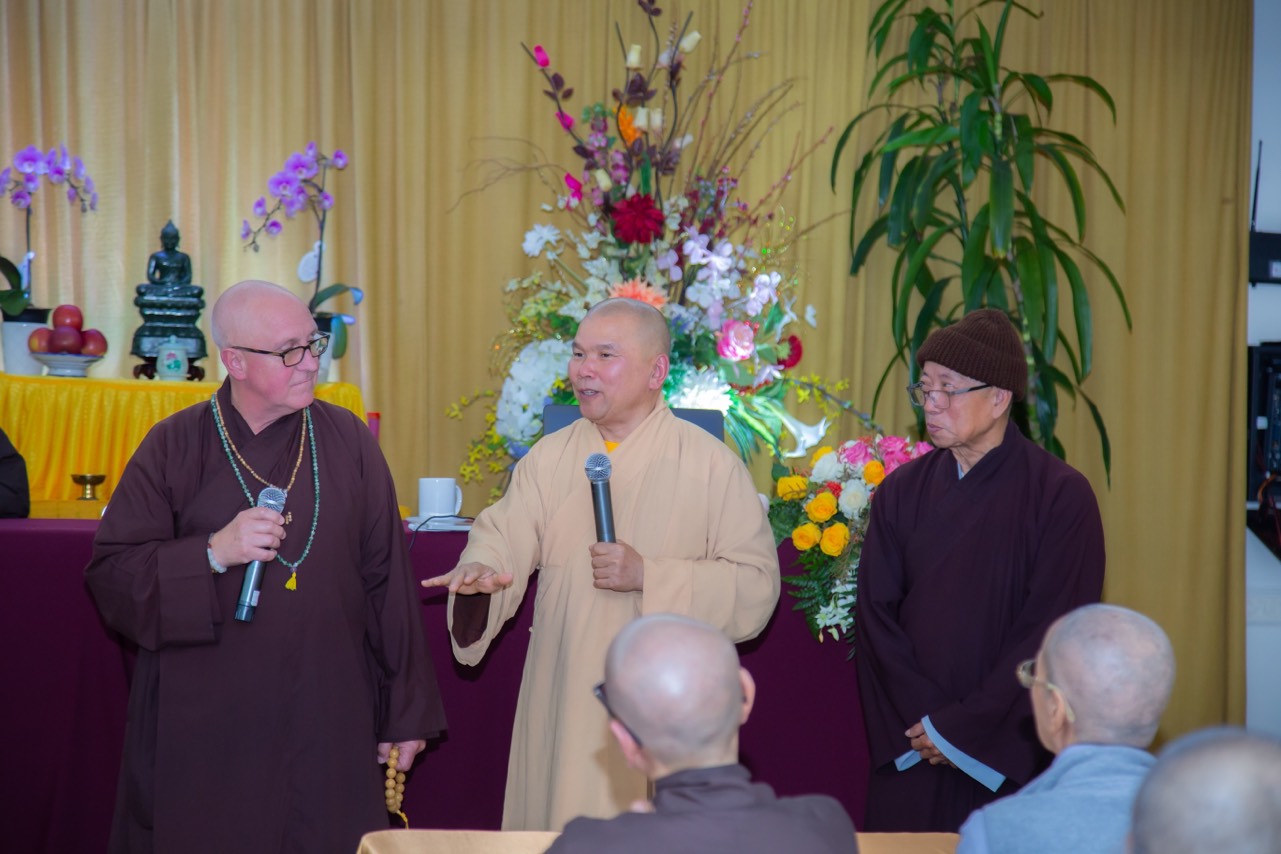Dharmacharya Andrew. J. Williams

A BRIEF HISTORY OF BUDDHISM Part 17 –
THE SRIVIJAYAN EMPIRE/ THE KHMER EMPIRE/VIETNAM/
THE EMERGENCE OF THE VAJRAYANA TRADITION
- ◆● ════ ◆◇◆════ ●◆●
THE SRIVIJAYAN EMPIRE (7th-13th Century):
“Srivijaya, a maritime empire centred at Palembang on the island of Sumatra in Indonesia, adopted Mahayana and Vajrayana Buddhism under a line of rulers named the Sailendra’s. The Chinese monk Yijing described Palembang as a great centre of Buddhist learning, where the emperor supported over a thousand monks at his court. Yijing also testified to the importance of Buddhism as early as the year 671 CE and advised future Chinese pilgrims to spend time there. The great master Atisha studied there before travelling to Tibet.
As the Srivijaya expanded their maritime empire, Buddhism thrived amongst its people. The Srivijaya spread Buddhist art during its expansion in Southeast Asia. Numerous statues of Bodhisattva’s from this period are characterised by a very strong refinement and technical sophistication, and are found throughout the region. Extremely rich architectural remains are visible at the temple of Borobudur, the largest Buddhist structure in the world, built from around 780 CE in Java, which has 505 images of the seated Buddha. Srivijaya declined due to conflicts with the Hindu Chola rulers of India, before being destabilised by the Islamic invasion and expansion from the 13th century onwards.”
THE KHMER EMPIRE (9th-13th Centuries):
“Later, from the 9th to the 13th centuries, the predominantly Mahayana Buddhist Khmer Empire dominated much of the South-East Asian peninsula. Under the Khmer, more than 900 temples were built in Cambodia and in neighbouring Thailand. Angkor was at the centre of this development, with a temple complex and urban organisation able to support around one million urban dwellers. One of the greatest Khmer kings, Jayavarman VII (1181-1219 CE), built large Mahayana Buddhist structures at Bayon and Angkor Thom.”
VIETNAM (3rd Century BCE Onwards):
“Buddhism in Vietnam, as practiced by the Vietnamese people, is mainly of the Mahayana tradition, with the Pure-Land and Thien (Zen) sects being most prevalent. Although both the Theravada and Vajrayana traditions are also practised there too. It is believed that Buddhism first came to Vietnam as early as the 3rd Century BCE from South Asia and India, with later influence from China from the 1st Century CE onwards. Vietnamese Buddhism is very similar to Chinese Buddhism and to some extent reflects the structure of Chinese Buddhism after the Song Dynasty.”
THE EMERGENCE OF THE VAJRAYANA TRADITION (5th Century Onwards):
“Various classes of Vajrayana literature developed as a result of various royal courts sponsoring Buddhism. Vajrayana Buddhism utilises mantra (mind protection) and visualisation methods, as well as other ritual practises, such as Mudras (Sacred Hand-Gestures), as taught in the Tantra (Continuum) texts, as part of the mind training process on the path to Enlightenment. Generally, the Tibetan tradition speaks of four classes of Tantra: Kriya (Action) Tantra; Charya (Elaboration) Tantra; Yoga Tantra; and Anuttara (Supreme) Yoga Tantra. Vajrayana Buddhism is still widely practised throughout the world, with many great masters travelling to many countries to give teachings and initiations.”
- ◆● ════ ◆◇◆════ ●◆●
~Dharmacharya Andrew. J. Williams~
A BRIEF HISTORY OF BUDDHISM Part 18 –
THE THERAVADA RENAISSANCE (FROM THE 11th CENTURY ONWARDS)
- ◆● ════ ◆◇◆════ ●◆●
“From the 11th Century, the destruction of Buddhism in India due to the Islamic invasions led to the decline of the Mahayana tradition in South-East Asia. Continental routes through the Indian subcontinent being compromised, direct sea routes developed from the Middle-East through Sri Lanka to China, leading to the adoption of Theravada Buddhism and the Pali Canon, introduced to the region around the 11th Century, from Sri Lanka.
King Anawrahta (1044-1078 CE), the founder of the Pagan Empire in Myanmar, unified the country and adopted Theravada Buddhism. This initiated the creation of thousands of Buddhist temples at Pagan, the capital, between the 11th and 13th Centuries. Around 2,200 of them are still standing. The power of the Burmese decreased with the rise of the Thai, and with the seizure of the capital by the Mongols in 1287 CE, but Theravada Buddhism has remained the main Buddhist school in Myanmar to this day.
The Theravada tradition was also adopted by the newly founded ethnic Thai kingdom of Sukhothai around 1260 CE. Theravada Buddhism was further reinforced during the Ayudthaya period (14th -18th Century), becoming an integral part of Thai society.
In the continental areas, Theravada Buddhism continued to expand into Laos and Cambodia in the 13th Century. From the 14th Century, however, on the coastal fringes and on the islands of South-East Asia, the influence of Islam expanded into Malaysia, Indonesia, and most of the islands as far as the Southern Philippines.
Nevertheless, since president Suharto’s rise to power in Indonesia in 1966, there has been a remarkable renaissance of Buddhism in Indonesia. Due in part to the requirements of Suharto’s New Order for the people of Indonesia to adopt one of the five official religions, which included Buddhism. Today it is estimated there are some 10 million Buddhists in Indonesia. A large part of them are people of Chinese ancestry.”
- ◆● ════ ◆◇◆════ ●◆●
~Dharmacharya Andrew. J. Williams~





















